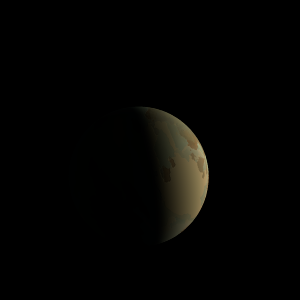|
|
Space Astro
|
Info for exoplanet "Neze-myd"
| Scientific (actual) data |
|---|
| Name | Kepler-213 c |
| Planet status | Confirmed |
| Radius | 0.209 |
| Orbital period | 4.82296 |
| Semi major axis | 0.057 |
| Discovered | 2014 |
| Updated | 2021-02-05 |
| Tconj | 2454970 |
| Impact parameter | 0.75 |
| Publication | Announced on a website |
| Detection type | Primary Transit |
| Alternate names | 2MASS J19231780+4438498 c, K00692.02, KIC 8557374 c, KOI-692 c, KOI-692.02, WISE J192317.80+443850.1 c |
| Star name | Kepler-213 |
| Right ascension | 290.82° |
| Declination | 44.65° |
| Mag j | 12.477 |
| Mag h | 12.17 |
| Mag k | 12.122 |
| Star distance | 646.74 |
| Star metallicity | -0.051 |
| Star mass | 0.94 |
| Star radius | 1.2 |
| Star temperature | 5696 |
| Star alternate names | 2MASS J19231780+4438498, KIC 8557374, KOI-692, WISE J192317.80+443850.1 |
| Wikipedia article | Kepler-213 c |
Back
| |
| Fictional info (?) |
|---|
| Suggested name | Neze-myd |
| Planet type | Hot planet |
| As seen from Kepler-213, in a frame of reference that rotates with the orbital motion, it appears to rotate only once every two years. |
| Atmosphere | Oxygen | 97% |
| Formaldehyde | 2% |
| Molecular hydrogen | 0.0035% |
| Atmospheric pressure | 18 bar |
 |
| No known satellites |
| Google search for Neze-myd |
|
Website by Joachim Michaelis
|
|
|
|